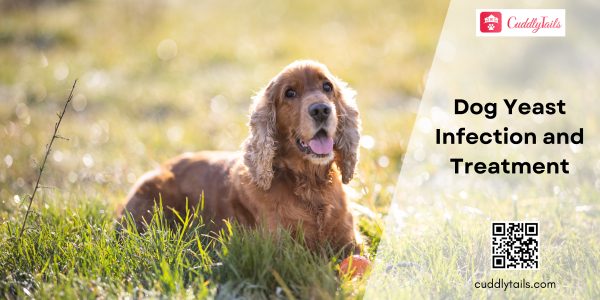Dog Yeast Infections and Treatment
Dog yeast infections are a common yet often misunderstood occurrence that can impact our furry companions. Simply put, it’s an overgrowth of yeast, a type of fungus that can cause various health problems if not addressed promptly. Early detection and treatment are crucial to prevent discomfort and complications for your pet.
Understanding Dog Yeast Infections
Yeast infections in dogs can be caused by several factors. These infections are commonly seen in the ears, skin, and paws of dogs. Understanding the causes and symptoms can help you identify and treat the problem effectively.
Causes of Yeast Infections in Dogs
Yeast infections in dogs can be triggered by a variety of factors:
- Environmental Factors: Humidity, moisture, and warm temperatures can create an ideal environment for yeast to thrive.
- Diet and Nutrition: Poor diet, food allergies, and high carbohydrate intake can contribute to yeast overgrowth.
- Underlying Health Conditions: Conditions like allergies, hormonal imbalances, and weakened immune systems can make dogs more susceptible to yeast infections.
Common Types of Yeast Infections in Dogs
Yeast infections can occur in different parts of a dog’s body, but the most common types are:
- Skin Yeast Infections: Often seen in moist areas like folds of the skin, armpits, and groin.
- Ear Yeast Infections: A prevalent issue, especially in dogs with floppy ears.
- Paw Yeast Infections: Frequently occur between the toes and pads of the feet.
Common Symptoms of Yeast Infections in Dogs
Recognizing the symptoms of a yeast infection early can lead to prompt treatment and relief for your dog. Common symptoms include:
- Itching and scratching
- Red, irritated skin
- Unpleasant odor
- Hair loss
- Thickened, discolored skin
- Ear discharge or odor
- Licking or chewing paws excessively
Diagnosis of Yeast Infections
If you suspect your dog has a yeast infection, it’s essential to consult a veterinarian for a proper diagnosis. The vet will perform a thorough examination and may conduct laboratory tests, such as skin scrapings or ear swabs, to identify the yeast.
Treatment Options for Yeast Infections
Once diagnosed, your vet will recommend the best treatment plan for your dog. Treatment options include topical treatments, oral medications, and home remedies.
Topical Treatments
Topical treatments are often the first line of defense against yeast infections.
- Antifungal Shampoos and Wipes: These products can help reduce yeast populations on the skin.
- Creams and Ointments: Applied directly to the affected area, these can provide targeted relief.
Oral Medications
In more severe cases, oral medications may be necessary.
- Antifungal Pills: These medications can help eliminate yeast from within the body.
- Probiotics and Supplements: These can help restore the balance of healthy bacteria and yeast in your dog’s system.
Home Remedies and Natural Treatments
For mild cases or as a supplement to veterinary treatments, some home remedies can be beneficial.
- Apple Cider Vinegar: Diluted and used as a rinse, it can help restore the skin’s pH balance.
- Coconut Oil: Known for its antifungal properties, it can be applied topically.
- Dietary Adjustments: Switching to a low-carb, high-quality diet can reduce yeast overgrowth.
Preventing Yeast Infections in Dogs
Prevention is always better than cure. Here are some tips to prevent yeast infections in your dog.
Proper Grooming and Hygiene
- Regular bathing and grooming can help keep your dog’s skin and coat healthy.
- Pay special attention to cleaning ears and paws, which are prone to yeast buildup.
- Use anti-yeast products as recommended by your vet.
Balanced Diet
- Feed your dog a balanced, high-quality diet.
- Avoid foods with high carbohydrate content.
- Consider adding beneficial supplements to your dog’s diet.
Regular Veterinary Check-Ups
Routine check-ups can help detect any health issues early and keep your dog in good health. You can use our 24/7 online vet care service to get certified consultation about your pet’s issues.
Conclusion
By following these tips and maintaining a healthy environment, you can help prevent those pesky yeast infections from becoming a recurring nightmare for your beloved canine companion. Let’s keep those tails wagging and those ears itch-free! Yeast infections in dogs can be a frustrating problem, but with the right knowledge and approach, you can manage and prevent these infections effectively. Regular grooming, a balanced diet, and prompt veterinary care are essential in keeping your furry friend healthy and happy.
Frequently Asked Questions (FAQ)
What are the first signs of a yeast infection in dogs?
The first signs often include itching, red and irritated skin, an unpleasant odor, and excessive licking or scratching.
Can a yeast infection go away on its own?
While mild cases might improve with better hygiene and diet, it’s crucial to consult a vet for proper diagnosis and treatment to prevent complications.
How can I prevent my dog from getting yeast infections?
Regular grooming, a balanced diet, and routine vet check-ups are key to preventing yeast infections in dogs.
Are certain breeds more prone to yeast infections?
Yes, breeds with floppy ears or skin folds, like Basset Hounds and Bulldogs, are more prone to yeast infections due to their anatomy.
What should I do if my dog’s yeast infection doesn’t improve?
If there’s no improvement after treatment, consult your veterinarian. They may need to adjust the treatment plan or investigate underlying health issues.
Can dogs get yeast infections from food?
Yes, dogs can develop yeast infections as a result of their diet. Foods that are high in carbohydrates and sugars can contribute to yeast overgrowth.

